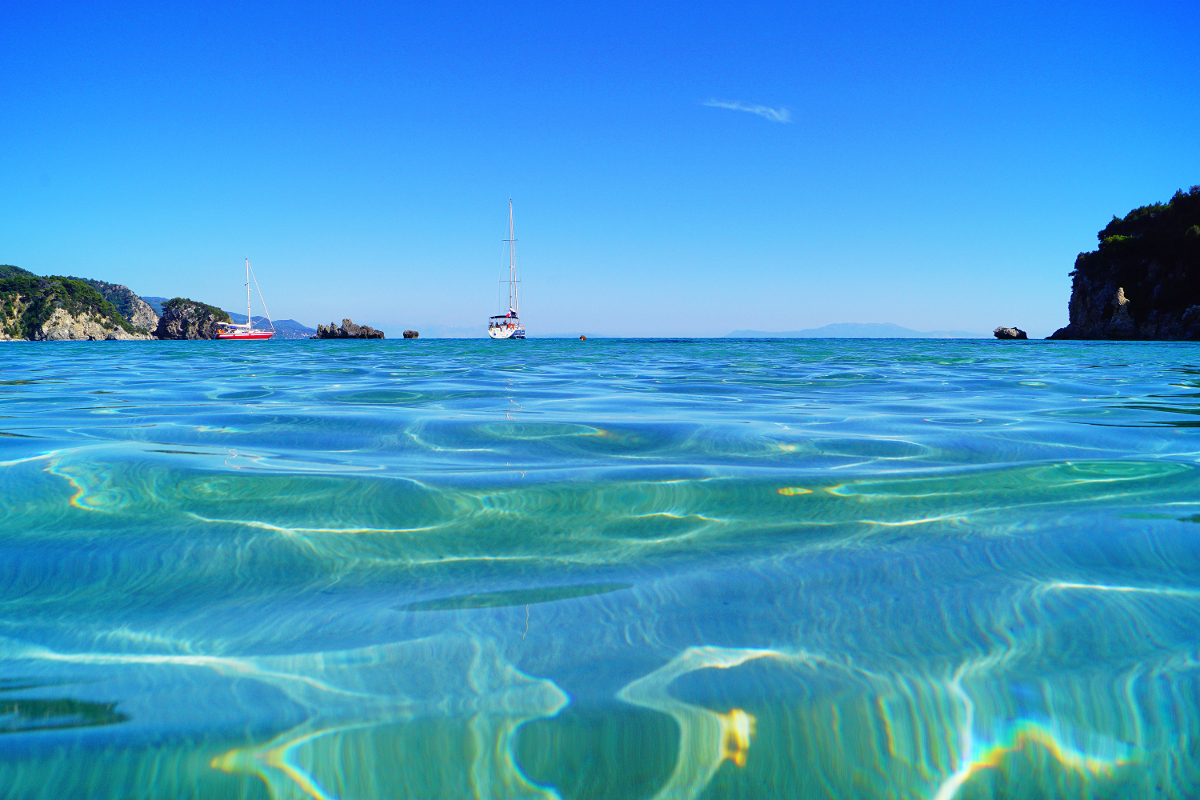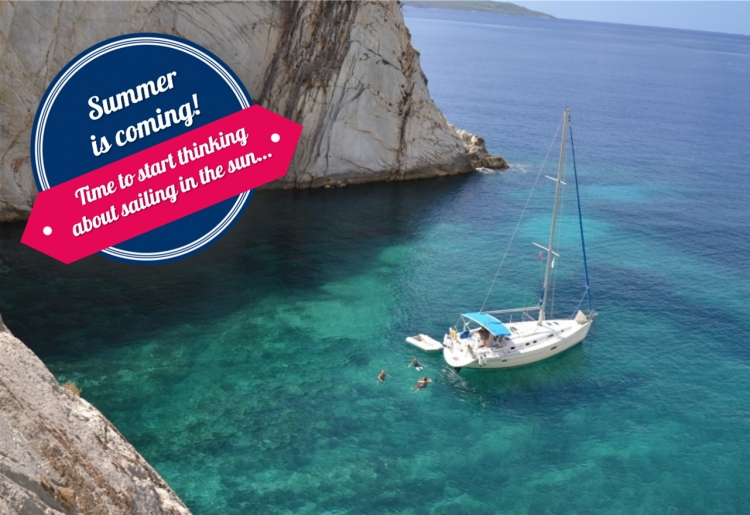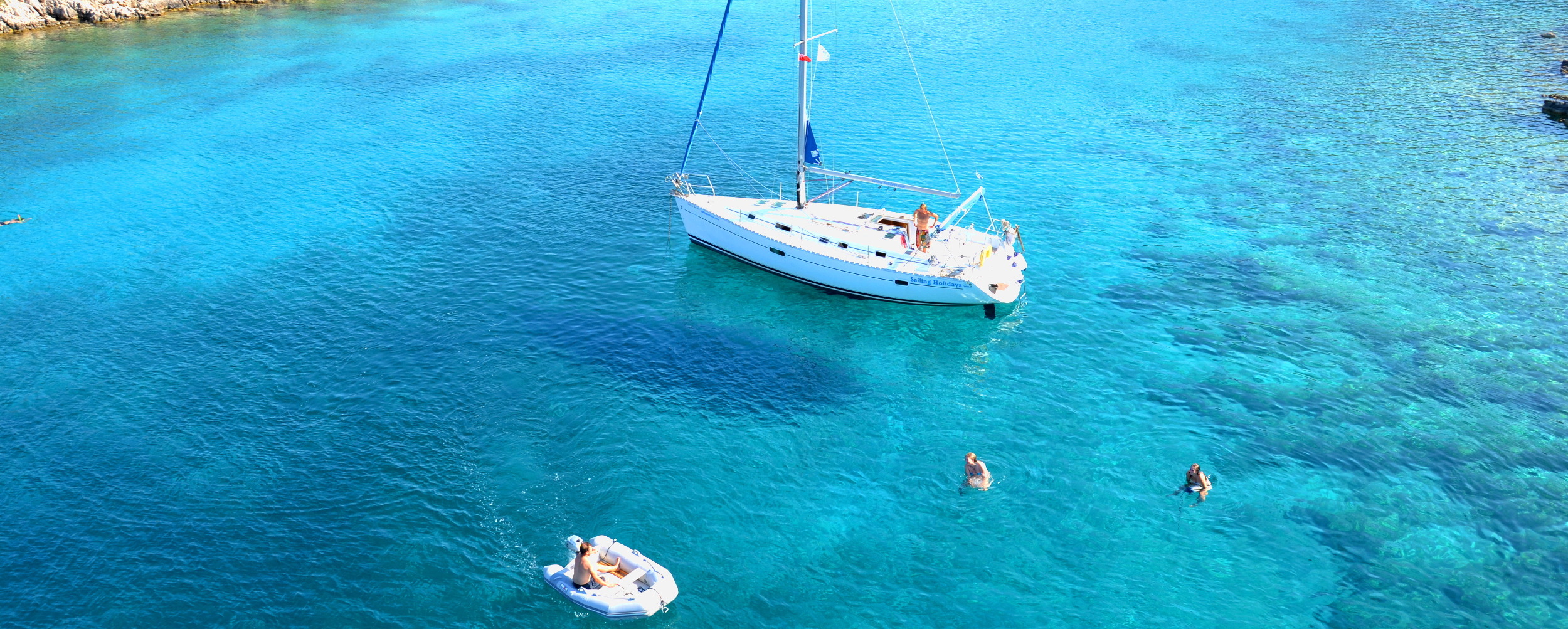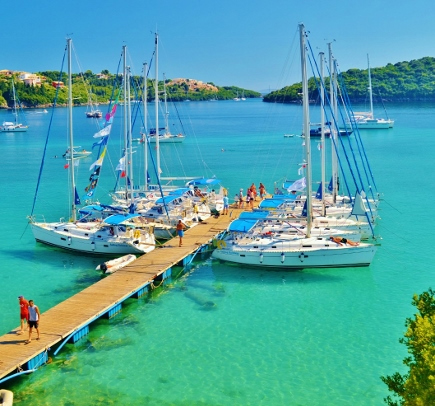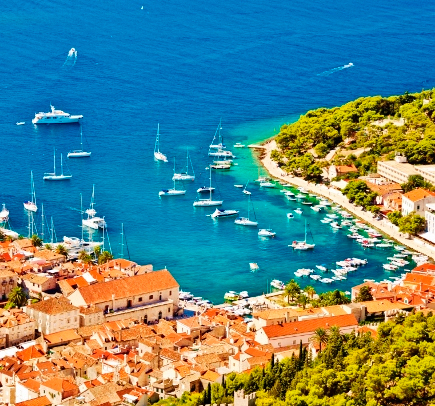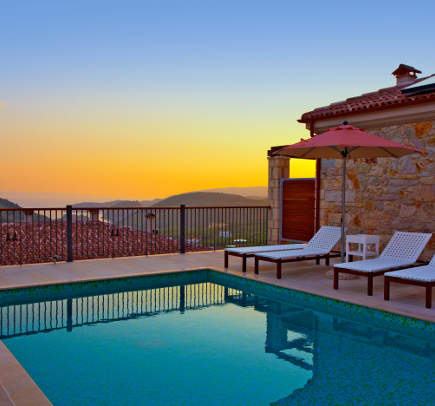The countdown is on...8 weeks until our first flotilla sets sail for Summer 2019! We want to help you "shakedown for summer", practice those knots, hone your sailing skills and just generally get ready to jump back onboard! This is the first of our practical guides to get you shipshape and ready for your summer sailing holiday!
Our Guide to Free-swinging!
We enjoy nothing more than dropping the hook in a secluded bay, surrounded by crystal clear water for an afternoon's free swinging or even better, an overnight stay!
Anchoring in bays is an enjoyable aspect of our flotilla holidays and gives people the opportunity to get away from it all and savour the beauty of nature around them. This is the ideal time once anchored to get some lunch on the go, have a swim, get those paddle boards out or just relax on deck and enjoy the sun!
Here’s a few handy tips to make free-swinging as stress free as possible so you can get anchored safely!
Whichever bay you choose, do it slowly!
Choosing the right bay is important! If you are sailing with one of our flotillas then your lead crew would have briefed you that morning on the safest/best bays to go to, based on the days weather forecast and route. Good plan to stick to those especially if you are fairly new to sailing however, if you do decide to find your own, here’s a few things to consider.
If it’s a flat calm day then your bay choice should be chosen according to the forecast wind for that afternoon. Don't anchor where the wind might blow you onto the land, anchor where forecast wind will blow you away from the land.
Depth is also an important factor. Your yacht is fitted with a depth sounder and once you ascertain that you have enough space to swing, drop your anchor in 3 to 12 metres of water. Ideally you want to find somewhere with a gradual gradient into shallow water, which will give you enough space to drop the hook anywhere between 3 and 12 metres of depth. In that clear water you will be able to see what you’re anchoring over and preferably choose a patch of sand. Most of the time you shouldn’t need to anchor in a depth over 12 metres but, if you do, be sure to put enough chain down!

Finding your spot
Now you have arrived at the entrance to the bay, it’s time to find your spot. There may be quite a few other yachts and possibly swimmers in the water, so always take it slowly with one of your crew on the bow looking ahead, windlass remote in hand and anchor pitched over the bow (not banging on the hull) ready to drop.
Find a patch with no rocks, turn your bow to the wind, stop the yacht (always important to make sure the yacht has properly stopped) and now drop the appropriate amount of chain whilst gently reversing back to set that anchor. The rule of thumb is: put out about 5 times the water depth in metres of chain which is a good basis to work from.
If it’s flat calm then you could put out less chain, if it is blowing a hooley, do not try to anchor at all! Remember to leave enough space between yours and other yachts as well as the shoreline in all directions.
Generally speaking, anchoring on sand or gravel with a long anchor chain is the least likely to cause any issues. Under no circumstances drop your anchor in big rock areas as you may never get it out! In addition, try to avoid areas of sea grass as this is an endangered plant.
Setting that Anchor - 3 easy steps...
You want to get that anchor firmly dug into the seabed for maximum holding, here’s how you do it.
1. As you drop the anchor you should be reversing gently. The water flow running through the anchor will hold it in the correct position so when it touches the seabed, the tip of the anchor is the first to hit and will therefore start digging in.
2. As soon as it does, you will feel the yacht begin to slow down. Keep reversing gently until there is clearly enough chain down.
3. Next step, drop the yacht into neutral and let it settle. Now you can switch off that engine and enjoy the peace and quiet!
Greek island waters do not have strong tidal movements, so generally speaking if you have plenty of chain on the bottom your yacht will not move anywhere very far.
Happy free-swinging this summer and remember, our lead crews are always there for help and advice when needed.
One of our favourite anchorages – Two Rock Bay in the North Ionian (pictured below). Activities there - Exploring the bat caves in the dinghy, snorkelling with the fish and turtles, bit of cliff jumping if feeling brave and of course an evening beach party with flotilla!
You can explore Two Rock Bay and the crystal clear waters of Corfu, Paxos and the Mainland on our Two Week Paxos & Corfu Area Flotilla.
This is the first of our Summer Countdown Pratical Guides, to see our second installment "Cooking on board your yacht - our top recipe picks" click here.
